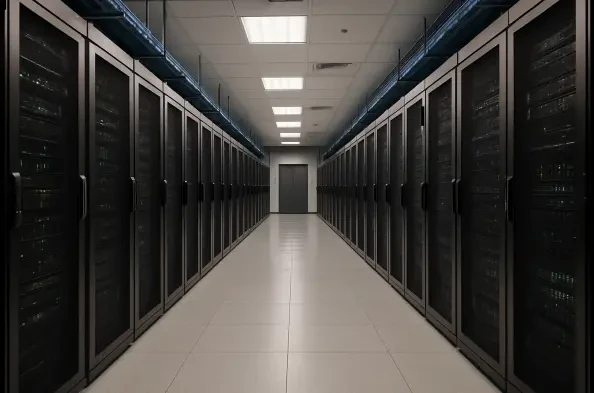In an era where artificial intelligence is transforming industries at an unprecedented pace, a critical obstacle has emerged that threatens to derail ambitious tech strategies across the board, as the severe shortage of Nvidia GPUs creates a significant bottleneck. Widely regarded as the gold standard for AI workloads due to their unmatched performance in training and inference tasks, the scarcity of these GPUs has forced enterprises, from tech giants to emerging startups, to reevaluate their plans and consider whether to scale back AI aspirations or explore alternative paths forward. Insights from Nvidia’s latest earnings call, combined with expert analyses from industry leaders, paint a stark picture of a supply crisis that shows no immediate signs of resolution. This article delves into the root causes of the shortage, its far-reaching impact on enterprise goals, and the strategic options available to navigate this challenging landscape.
Demand Overwhelm and Enterprise Setbacks
The explosive growth in AI adoption has fueled an insatiable demand for Nvidia GPUs, pushing the company’s supply chain to its breaking point. During a recent earnings call, Nvidia’s Chief Financial Officer, Colette Kress, confirmed that GPU inventory is entirely sold out, with data centers and cloud providers fully utilizing every available chip. Despite quarterly revenue soaring to an astonishing $57 billion, largely driven by data center customers, the gap between supply and demand remains glaring. CEO Jensen Huang expressed confidence in the company’s supply chain partnerships, yet the reality on the ground tells a different story—organizations are struggling to access the hardware they’ve built their AI strategies around. This mismatch is not just a minor hiccup; it’s a fundamental barrier to scaling AI initiatives, leaving many companies in a precarious position as they attempt to keep pace with industry advancements.
For enterprises, the implications of this shortage are profound and immediate, cutting across sectors and company sizes. Analysts have observed that numerous organizations, from established corporations to innovative startups, are finding their AI projects stalled due to the unavailability of critical hardware. This isn’t merely about delayed timelines; it’s about the risk of losing a competitive edge in a landscape where AI capabilities are increasingly a differentiator. Many had assumed Nvidia’s chips would be readily accessible, only to face the harsh reality of long waitlists and limited allocations. The pressure is on for CIOs and data center managers to rethink their approach, whether by prioritizing certain projects over others or exploring ways to maximize existing resources. The stakes are high, as failure to adapt could mean ceding ground to competitors who find ways to circumvent these constraints.
Hardware Diversification as a Viable Path
Amid the Nvidia GPU shortage, a growing chorus of experts advocates for diversification as a practical solution to keep AI projects moving forward. Turning to alternative hardware providers like AMD and Intel offers a potential workaround, even if their chips may not always match Nvidia’s performance in every scenario. These alternatives can still deliver adequate power for specific workloads, particularly in areas like inference where raw computational strength is less critical. Additionally, custom solutions such as application-specific integrated circuits (ASICs) are gaining attention for their ability to handle niche tasks with efficiency, often at a lower cost. The key lies in matching hardware to the specific demands of a project rather than defaulting to the latest high-end Nvidia model, a strategy that could alleviate dependency on a single supplier.
Beyond competitor chips, rethinking the role of traditional central processing units (CPUs) in AI workflows presents another avenue for adaptation. While CPUs lack the specialized architecture of GPUs for machine learning tasks, they can still support certain aspects of AI development, especially in smaller-scale or less compute-intensive applications. Analysts emphasize the importance of “right-sizing” infrastructure—assessing the precise needs of each workload and selecting the most suitable hardware accordingly. This approach not only mitigates the impact of the shortage but also encourages cost-effectiveness, as enterprises avoid over-investing in premium chips for tasks that don’t require them. By broadening their hardware portfolio, companies can build a more resilient foundation for AI initiatives, reducing the risk of being derailed by supply chain bottlenecks.
Cloud Computing as a Strategic Workaround
As on-premises Nvidia GPUs remain elusive, cloud computing emerges as a compelling alternative for enterprises needing immediate access to AI compute power. Major cloud providers often secure priority access to Nvidia’s limited chip supply, positioning them as a faster route to resources compared to waiting for direct hardware shipments. This advantage allows businesses to bypass the logistical headaches of acquiring and maintaining physical infrastructure, instead tapping into scalable, on-demand services. For organizations with urgent AI projects or fluctuating workload demands, the cloud offers flexibility that traditional setups struggle to match, making it an increasingly popular choice in the face of ongoing shortages.
However, while cloud solutions provide a lifeline, they come with considerations that enterprises must weigh carefully. Dependency on third-party providers introduces potential challenges, such as data security concerns and recurring costs that can add up over time. Additionally, not all workloads are ideally suited for cloud environments, particularly those requiring low latency or strict regulatory compliance. Despite these caveats, the ability to access cutting-edge AI capabilities without waiting for hardware availability is a significant draw. Experts suggest a hybrid approach for many companies—leveraging cloud resources for immediate needs while planning for long-term on-premises capacity. This balanced strategy helps mitigate the impact of the shortage without fully relinquishing control over critical infrastructure.
Proactive Planning Amid Supply Chain Risks
Navigating the Nvidia GPU shortage demands more than reactive measures; it requires strategic foresight to address the complexities of a strained supply chain. Analysts advise CIOs to closely monitor potential bottlenecks, which extend beyond high-profile components like leading-edge wafers to less obvious elements such as thermal management systems and server racks. Placing orders well in advance—sometimes up to 12 months ahead—and coordinating with financial teams for prepayments can help secure a spot in the queue. Building flexible project timelines is equally crucial, as delays in shipment are often inevitable under current conditions. Such proactive steps enable organizations to maintain momentum on AI initiatives despite the pervasive uncertainty surrounding hardware availability.
Supply chain risks are not limited to production capacity alone; they are compounded by external factors that can disrupt the flow of materials. Geopolitical tensions, ranging from trade disputes to regional conflicts, pose a threat to the global network of suppliers that Nvidia relies upon. Even minor disruptions in ancillary systems, such as power availability or liquid cooling solutions, can ripple through the ecosystem, delaying deliveries further. While Nvidia often sets conservative shipment targets to buffer against smaller hiccups, a major event could disproportionately affect smaller enterprises lacking the negotiating power of large cloud providers. Staying ahead of these risks through diligent monitoring and contingency planning is essential for any business aiming to weather the shortage without sacrificing progress.
Long-Term Outlook and Capacity Constraints
Looking beyond the immediate crisis, the Nvidia GPU shortage reveals a deeper structural challenge that isn’t likely to resolve quickly. With future capacity already pre-booked through massive commitments from hyperscalers and frontier research labs—valued in the tens of billions—many enterprises find themselves far down the priority list. This pre-allocation of resources means that waiting for supply to catch up may not be a feasible option for most organizations. Instead, the focus must shift to long-term strategies that account for sustained scarcity, whether by diversifying hardware sources or recalibrating the scale of AI projects to align with realistic resource availability.
The broader implications of this capacity crunch extend to how companies conceptualize their AI roadmaps. Rather than banking on an eventual surplus of Nvidia chips, businesses are encouraged to explore sustainable models that incorporate a mix of solutions, from alternative hardware to cloud-based services. This shift also prompts a reevaluation of project priorities, focusing on high-impact initiatives that deliver value even with constrained resources. The reality of a prolonged shortage underscores the importance of adaptability—enterprises that can pivot to flexible, multi-vendor approaches are better positioned to thrive. As the AI landscape continues to evolve, building such resilience will be critical to maintaining a competitive edge.
Crafting Resilient AI Frameworks
Reflecting on the Nvidia GPU shortage, it became evident that over-reliance on a single hardware provider posed significant risks to enterprise ambitions. Companies had to confront the harsh truth that their AI dreams could be derailed by supply constraints beyond their control. The crisis highlighted a pivotal moment in tech strategy, where adaptation was not optional but mandatory for survival in a rapidly advancing field. Those who recognized the need for change early were able to take decisive action, ensuring their projects stayed on course despite the challenges.
Moving forward, the path to resilience lies in embracing a diversified approach that blends alternative hardware, cloud solutions, and pragmatic scaling of AI goals. Enterprises should continue to explore partnerships with multiple vendors to avoid future bottlenecks, while investing in modular infrastructure that can adapt to varying resource availability. Additionally, fostering closer collaboration between IT and finance teams ensures better preparedness for advance planning and risk mitigation. By embedding flexibility into their frameworks, businesses can safeguard their AI initiatives against similar disruptions, turning a supply crisis into an opportunity for innovation and strategic growth.






